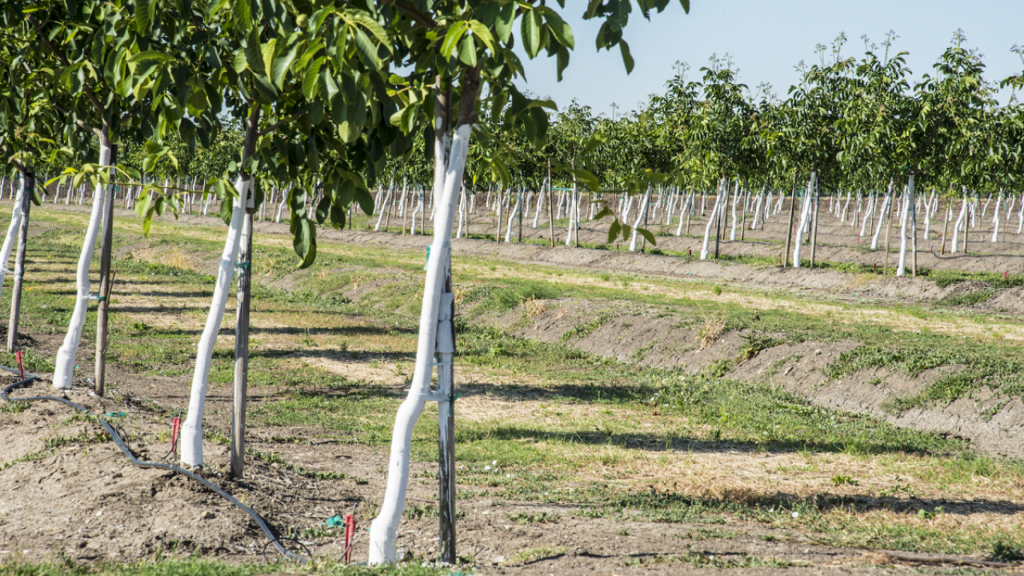
Irrigation is one of the most important operations and is critical for the success of a walnut orchard. During the previous decades, a great percentage of walnut orchards were non-irrigated. However, farmers quickly found out that the walnut tree responds greatly to artificial water supply, both in terms of vigorous growth for timber production and in terms of remarkable increase in nut production. Thus, today most of commercial walnut orchards are irrigated. As a first rule of thumb, the average commercially grown walnut tree needs 1270 mm (50 inches) of precipitation every year. As a second rule of thumb, the walnut trees need more than 50% of the annual water supply during summer (June, July and August). However, in a very dry season, irrigation should be quickly applied in certain stages. Irrigation during winter (in areas where rainfall is very limited) has been reported to increase vegetation growth during spring. Moreover, maximum growth of nuts takes place during the 5th to 7th week after the blossom. If there are no rainfalls, lack of irrigation during this period will result in greater than average percentage of small nuts. Many walnut farmers irrigate the trees at the outer perimeter of the tree’s canopy, where the natural rainfall would effect. The trunk must not be watered, as it can favor the spread of some diseases. However, these are just some indicative rules of thumb and common practices and should not be followed without making your own research. Every field is different and has different needs. Commercially grown walnut trees are irrigated through flood, furrow, border strip, sprinkler and drip systems. In many cases, fertigation is applied (fertigation is a combination of Fertilization and Irrigation, or the injection of water soluble fertilizers in the irrigation systems). Applying flood irrigation once a week during the growing season is a popular practice in Mexico. Microjet irrigation is used in Australia, where walnut trees are irrigated several times a week during the summer. Modern devices and sensors in the soil are used to determine
https://wikifarmer.com/
